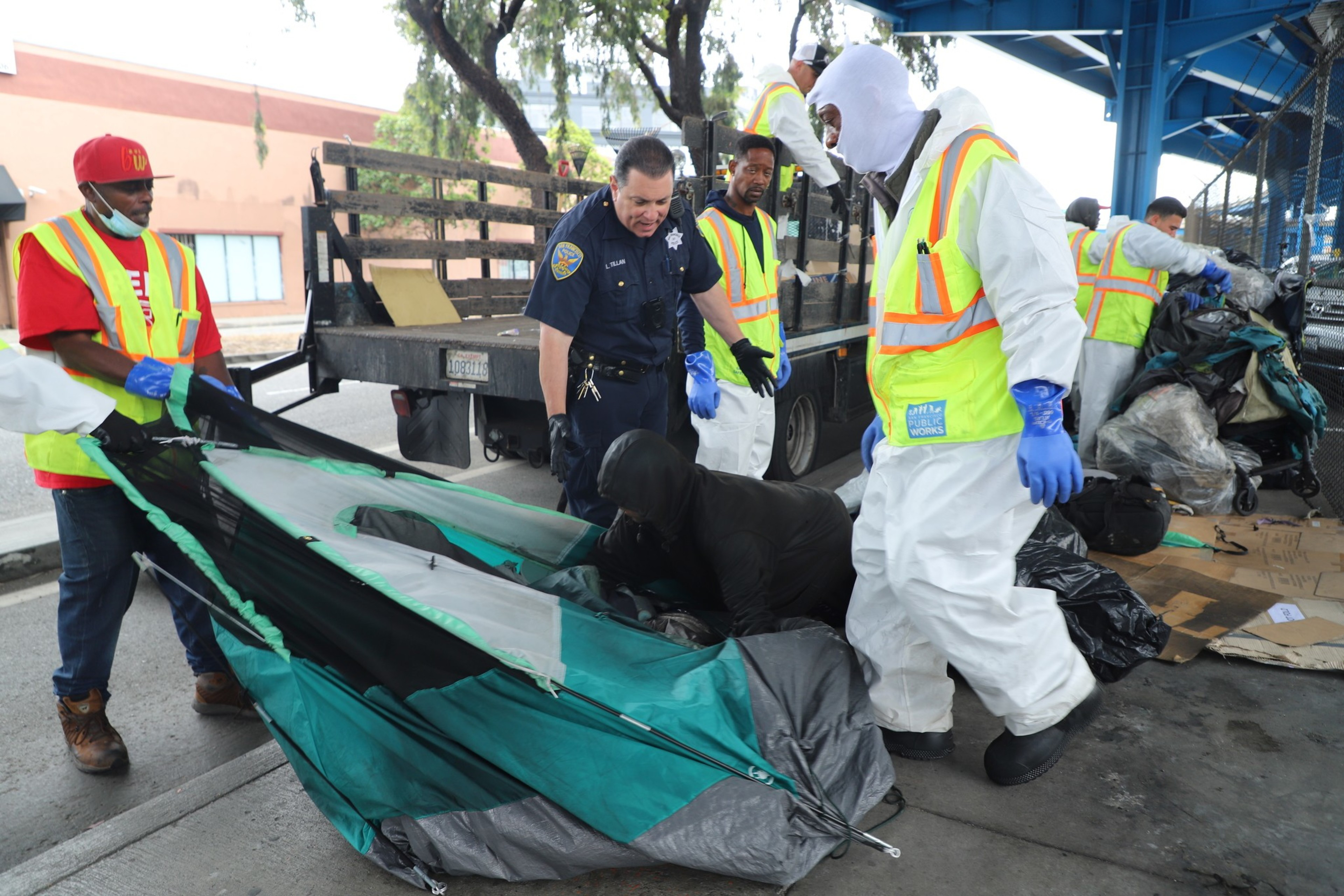With shelters near capacity and “aggressive” encampment sweeps underway, many wonder what the city’s plan is to address the homelessness crisis. The answer so far: bus tickets.
Mayor London Breed issued an executive order Thursday directing all city workers to offer homeless people trips out of town before providing any other services, such as housing or shelter, The Standard has learned.
Breed said the number of homeless people moving to San Francisco from other states and California counties increased from 28% in 2019 to 40% of the total homeless population this year, according to data her office shared exclusively with The Standard.
Of those surveyed, 37% who were previously housed say they lived in San Francisco for less than a year when they became homeless, up from 15% in 2019. The number of people who lived in SF for more than 10 years before becoming homeless dropped to 14% from 43% in 2019.
The data were collected from the city’s point-in-time count, which began in January. Some data from the count have come under fire for being inaccurate and confusing.
“We’ve made significant progress in housing many long-time San Franciscans who became homeless,” Breed said in a statement. “But we are seeing an increase in people in our data who are coming from elsewhere. Today’s order will ensure that all our city departments are leveraging our relocation programs to address this growing trend.”
Here are the key points of Breed’s executive order:
• Mandates all city and contracted staff who directly engage with individuals experiencing homelessness to offer access to one of the city’s relocation assistance programs before offering any other services, including housing and shelter.
• Requires first responders, including police officers, firefighters, and paramedics, to provide information handouts on the city’s relocation services and a contact number.
• Establishes a tracking system that will publish data measuring the effectiveness of each program.
The city previously had at least two programs to relocate homeless people: Journey Home and Homeward Bound, which now are effectively combined. The mayor’s order brings all relocation services under one umbrella and connects homeless people with loved ones in other counties. Beyond bus tickets, the program offers cash assistance, airfare and help with relocation.
The order follows a recent U.S. Supreme Court ruling that cleared the path to partially overturn a Ninth Circuit Court of Appeals injunction that limited how aggressive the city could be in its encampment sweeps.
Shelters nearly full
The city’s shelters were 94% full as of Thursday morning, with 307 beds available. The city typically keeps its shelters below 95% capacity to make room for emergency admissions from hospitals, jails and outreach operations.
In June, 575 people applied for the city’s shelter waiting list, and the average wait time among the 112 people who landed a bed was 12 days. There were 2,913 people living on city streets and 1,442 people living in vehicles in January, according to the point-in-time data.

On Tuesday, The Standard witnessed an unscheduled encampment sweep under the Central Freeway. Video of the sweep shows a police officer telling a man, who was scrambling to gather his belongings, that encampments are “no more” due to orders from Breed and Gov. Gavin Newsom. City officials say all people who were affected by the operation were offered shelter.
Emily Cohen, spokesperson for the Department of Homelessness and Housing, said demand for shelter is not expected to increase as enforcement ramps up. But she would not elaborate on the city’s plan if demand does rise.
“We know that we don’t have enough shelter, but I don’t have a plan that I can immediately share for how we might expand shelter in the event that we reach 98% or 99% occupation,” Cohen said. “We are certainly always looking at ways to expand shelter.”
